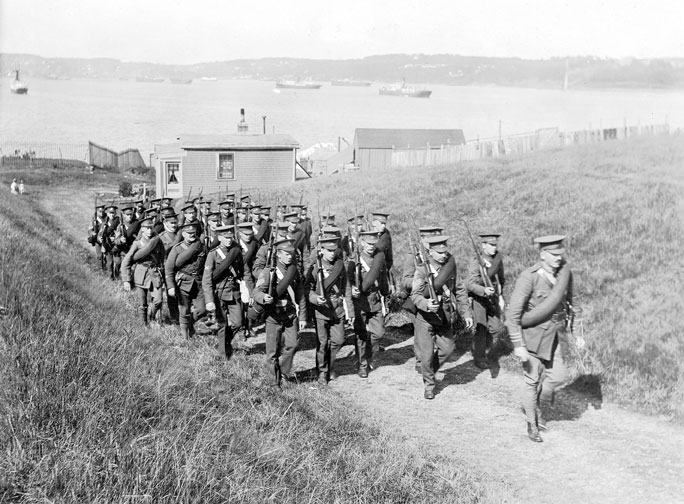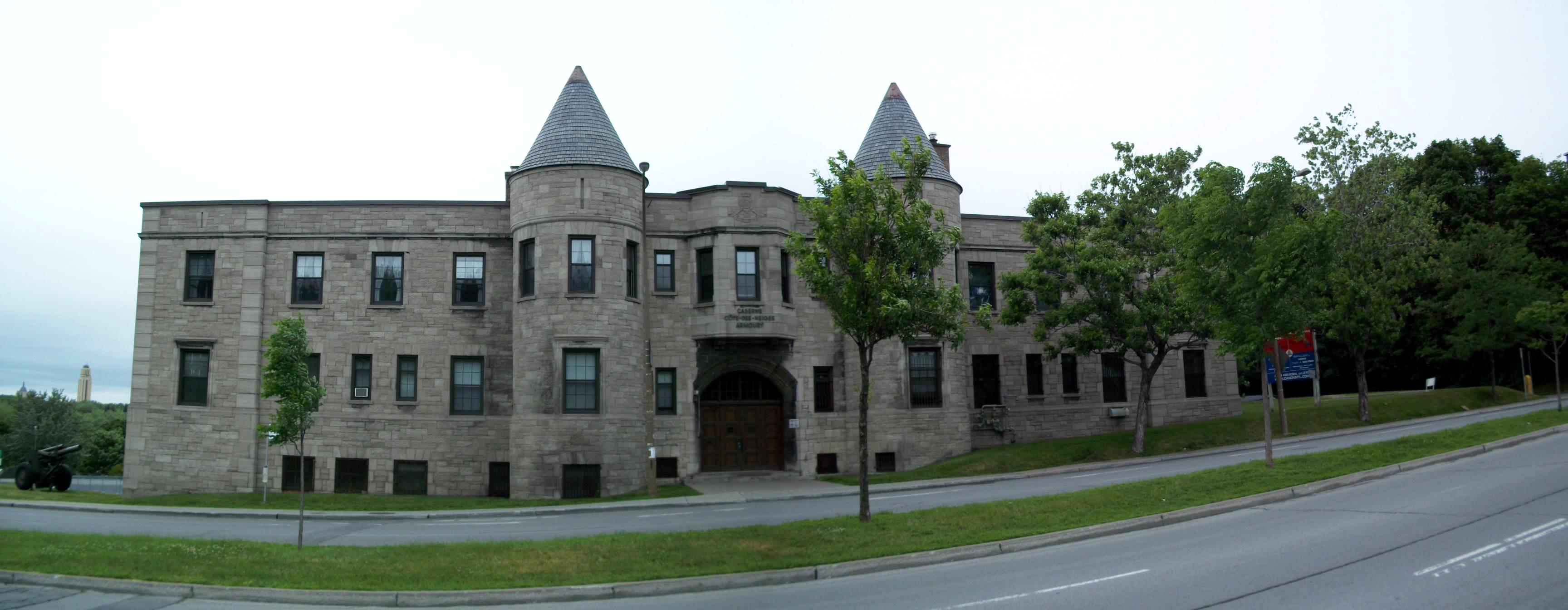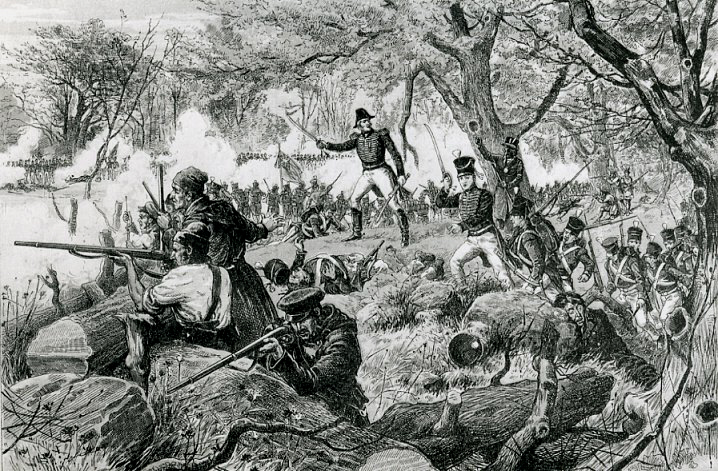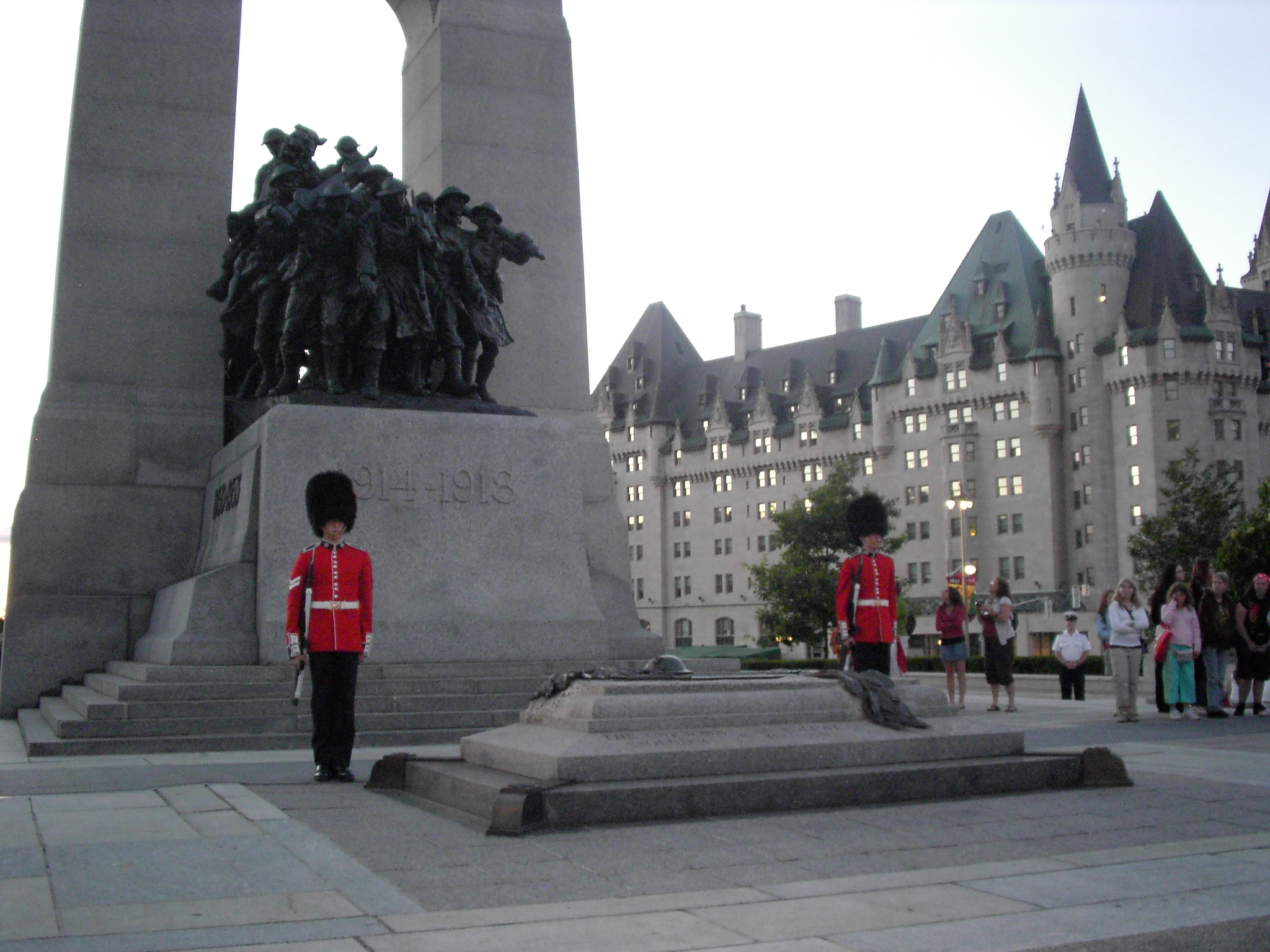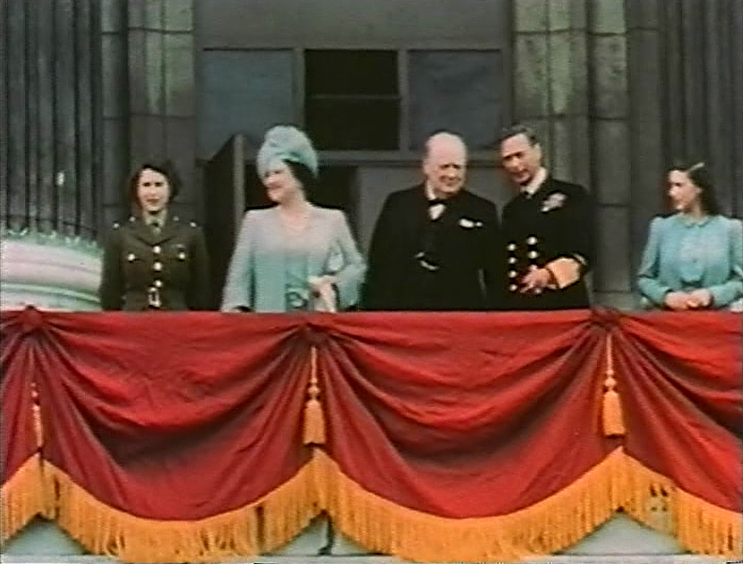|
3rd Field Artillery Regiment (Canada)
The 3rd Field Artillery Regiment, RCA () is a Canadian Army Reserve artillery regiment based in Saint John, New Brunswick. It is part of the 5th Canadian Division's 37 Canadian Brigade Group. The Loyal Company of Artillery of the City of Saint John was formed on May 4, 1793 after New Brunswick passed its first ''Militia Act'' in 1792 in response to the outbreak of the French Revolutionary Wars. Since that historic founding The Loyal Company of Artillery formed the core of a body of militia artillery that has existed in the province right up to the present day in the form of 3rd Field Artillery Regiment, Royal Canadian Artillery. For much of the 20th century the Regiment proudly carried "The Loyal Company" designation as part of its title, perpetuating the connection to Canada's oldest artillery unit. The Loyal Company was the first of several militia artillery companies, renamed batteries in the later nineteenth century, formed in for the defence of the colony's main port and bo ... [...More Info...] [...Related Items...] OR: [Wikipedia] [Google] [Baidu] |
Saint John, New Brunswick
Saint John () is a port#seaport, seaport city located on the Bay of Fundy in the province of New Brunswick, Canada. It is Canada's oldest Municipal corporation, incorporated city, established by royal charter on May 18, 1785, during the reign of George III. The Port of Saint John is Canada's third-largest by tonnage with a cargo base that includes dry and liquid bulk, Breakbulk cargo, break bulk, containers, and cruise. The city has a strong industrial base, including oil refining and manufacturing, matched with finance and tourism sectors and research institutions such as the New Brunswick Museum and the University of New Brunswick. Saint John was the most populous in New Brunswick until the 2016 Canadian census, 2016 census, when it was overtaken by Moncton. It is currently the second-largest city in the province, with a population of 69,895 over an area of . French explorer Samuel de Champlain landed at Saint John Harbour on June 24, 1604, the feast of St. John the Baptist, ... [...More Info...] [...Related Items...] OR: [Wikipedia] [Google] [Baidu] |
Royal Canadian Artillery
The Royal Regiment of Canadian Artillery () is the artillery personnel branch of the Canadian Army. History Many of the units and batteries of the Royal Regiment of Canadian Artillery are older than the Dominion of Canada itself. The first artillery company in Canada was formed in the province of Canada (New France) in 1750. Volunteer Canadian artillery batteries existed before 1855 but their history is mostly unknown. Seven batteries of artillery were formed after the passage of the Militia Act of 1855 which allowed Canada to retain a paid military force of 5,000 men. One of the pre-1855 volunteer batteries formed in Saint John, New Brunswick, in 1793 was called the "Loyal Company of Artillery" and exists today as the 3rd Field Artillery Regiment, RCA. After Confederation On 20 October 1871, the first regular Canadian army units were created, in the form of two batteries of garrison artillery; thus, that date is considered the regiment's birthday. "A" Battery in Kingston, ... [...More Info...] [...Related Items...] OR: [Wikipedia] [Google] [Baidu] |
Military Units And Formations Of New Brunswick
A military, also known collectively as armed forces, is a heavily armed, highly organized force primarily intended for warfare. Militaries are typically authorized and maintained by a sovereign state, with their members identifiable by a distinct military uniform. They may consist of one or more military branches such as an army, navy, air force, space force, marines, or coast guard. The main task of a military is usually defined as defence of their state and its interests against external armed threats. In broad usage, the terms "armed forces" and "military" are often synonymous, although in technical usage a distinction is sometimes made in which a country's armed forces may include other paramilitary forces such as armed police. Beyond warfare, the military may be employed in additional sanctioned and non-sanctioned functions within the state, including internal security threats, crowd control, promotion of political agendas, emergency services and reconstruction, prot ... [...More Info...] [...Related Items...] OR: [Wikipedia] [Google] [Baidu] |
Military Units And Formations Established In 1962
A military, also known collectively as armed forces, is a heavily armed, highly organized force primarily intended for warfare. Militaries are typically authorized and maintained by a sovereign state, with their members identifiable by a distinct military uniform. They may consist of one or more military branches such as an army, navy, air force, space force, marines, or coast guard. The main task of a military is usually defined as defence of their state and its interests against external armed threats. In broad usage, the terms "armed forces" and "military" are often synonymous, although in technical usage a distinction is sometimes made in which a country's armed forces may include other paramilitary forces such as armed police. Beyond warfare, the military may be employed in additional sanctioned and non-sanctioned functions within the state, including internal security threats, crowd control, promotion of political agendas, emergency services and reconstruction, pro ... [...More Info...] [...Related Items...] OR: [Wikipedia] [Google] [Baidu] |
Field Artillery Regiments Of Canada
Field may refer to: Expanses of open ground * Field (agriculture), an area of land used for agricultural purposes * Airfield, an aerodrome that lacks the infrastructure of an airport * Battlefield * Lawn, an area of mowed grass * Meadow, a grassland that is either natural or allowed to grow unmowed and ungrazed * Playing field, used for sports or games Arts and media * In decorative art, the main area of a decorated zone, often contained within a border, often the background for motifs ** Field (heraldry), the background of a shield ** In flag terminology, the background of a flag * ''FIELD'' (magazine), a literary magazine published by Oberlin College in Oberlin, Ohio * ''Field'' (sculpture), by Anthony Gormley Organizations * Field department, the division of a political campaign tasked with organizing local volunteers and directly contacting voters * Field Enterprises, a defunct private holding company ** Field Communications, a division of Field Enterprises * Field Museu ... [...More Info...] [...Related Items...] OR: [Wikipedia] [Google] [Baidu] |
5th (British Columbia) Field Artillery Regiment, RCA
The 5th (British Columbia) Field Regiment, Royal Canadian Artillery is a Canadian Army Reserve artillery regiment based at the Bay Street Armoury in Victoria, British Columbia. It is part of the 3rd Canadian Division's 39 Canadian Brigade Group. Although having served for nearly one-hundred and sixty years as a field artillery unit, the early history of the regiment is inextricably intertwined with the defences of the naval base at Esquimalt. The regiment is currently equipped wit C3 towed 105mm gun-howitzers The regiment's museum is located in the Bay Street Armoury and is open to the public on Tuesday evenings. Allocated Batteries *55th Field Battery, RCA *56th Field Battery, RCA 55 and 56 Batteries were redesignated as 155 and 156 Batteries on 21 May 2016 - no source referenced provided* Lineage 75th (British Columbia) Heavy Anti-Aircraft Regiment, RCA *Originated 12 October 1883 in Victoria, British Columbia as the British Columbia Provisional Regiment of Garrison Artill ... [...More Info...] [...Related Items...] OR: [Wikipedia] [Google] [Baidu] |
2nd Field Artillery Regiment, RCA
The 2nd Field Artillery Regiment, RCA () is a Royal Canadian Artillery reserve regiment. It is located in Montreal and shares its headquarters with The Royal Canadian Hussars (Montreal) at the Côte-des-Neiges Armory. Although there had been temporary volunteer artillery units formed in Montreal as early as 1828, the regiment has its origin in the 3rd Montreal Battery formed in 1855 as a result of the departure of British regular troops for the Crimean War and the passage of the Militia Act of 1855. Militia forces, including the five field batteries formed, would for the first time be maintained at public expense. In 1856 the Battalion of Montreal Artillery was formed and in 1895 it was renamed the 2nd "Montreal" Regiment, CA. War in Europe In the First World War several batteries of artillery were raised in Montreal and the 2nd Brigade included the 3rd Montreal Battery amongst its four batteries. During the war, the unit took part in every action of the 1st Canadian Division ... [...More Info...] [...Related Items...] OR: [Wikipedia] [Google] [Baidu] |
History Of The Canadian Army
The history of the Canadian Army, began when the title first came into official use in November 1940, during the Second World War, and is still used today. Although the official titles, Mobile Command, and later Land Force Command, were used from February 1968 to August 2011, "Canadian Army" continued to be unofficially used to refer to the ground forces of the Canadian Armed Forces, much as it has been from Confederation in 1867 to the present. The term was often even used in official military publications, for example in recruiting literature and the official newspaper of the Canadian Forces, ''The Maple Leaf''. On August 16, 2011, the title, "Canadian Army", was officially restored, once again bringing the official designation in line with common and historical usage. Formation Prior to Canadian Confederation in 1867, defence for the colonies that comprise present-day Canada was dependent on the armies of colonial powers. The military of New France (1608–1763) was dependent ... [...More Info...] [...Related Items...] OR: [Wikipedia] [Google] [Baidu] |
Military History Of Canada
The military history of Canada spans centuries of conflicts within the country, as well as international engagements involving the Canadian Armed Forces, Canadian military. The Indigenous nations of Canada engaged in conflicts with one another for millennia. The arrival of European settlers in the 17th century led to new alliances and hostilities among Indigenous nations and colonial powers, leading to conflicts such as the Beaver Wars. The late 17th and 18th centuries saw French and Indian Wars, four major British-French conflicts fought in Canada, culminating with the British Conquest of New France, conquest of New France in 1760. This reshaped the region and contributed to the American Revolutionary War, during which American attempts to Invasion of Quebec (1775), seize Quebec and Nova Scotia in the American Revolution, spark a revolt in Nova Scotia failed. The 19th century brought both external threats and internal challenges to British North America. While its colonies repell ... [...More Info...] [...Related Items...] OR: [Wikipedia] [Google] [Baidu] |
Diana, Princess Of Wales
Diana, Princess of Wales (born Diana Frances Spencer; 1 July 1961 – 31 August 1997), was a member of the British royal family. She was the first wife of Charles III (then Prince of Wales) and mother of Princes William, Prince of Wales, William and Prince Harry, Duke of Sussex, Harry. Her activism and glamour, which made her an international icon, earned her enduring popularity. Diana was born into the British nobility and grew up close to the royal family, living at Park House on their Sandringham estate. In 1981, while working as a nursery teacher's assistant, she became engaged to Charles, the eldest son of Elizabeth II. Wedding of Prince Charles and Lady Diana Spencer, Their wedding took place at St Paul's Cathedral in July 1981 and made her Princess of Wales, a role in which she was enthusiastically received by the public. The couple had two sons, William and Harry, who were then respectively second and third in the line of succession to th ... [...More Info...] [...Related Items...] OR: [Wikipedia] [Google] [Baidu] |
Prince Philip
Prince Philip, Duke of Edinburgh (born Prince Philip of Greece and Denmark, later Philip Mountbatten; 10 June 19219 April 2021), was the husband of Queen Elizabeth II. As such, he was the consort of the British monarch from his wife's accession on 6 February 1952 until Death and funeral of Prince Philip, Duke of Edinburgh, his death in 2021, making him the longest-serving royal consort in history. Philip was born in Greece into the Greek royal family, Greek and Danish royal family, Danish royal families; his family was exiled from the country when he was eighteen months old. After being educated in France, Germany, and the United Kingdom, he joined the Royal Navy in 1939, when he was 18 years old. In July 1939, Philip began corresponding with the 13-year-old Princess Elizabeth, the elder daughter and heir presumptive of King George VI. During the Second World War, he served with distinction in the British Mediterranean Fleet, Mediterranean and Britis ... [...More Info...] [...Related Items...] OR: [Wikipedia] [Google] [Baidu] |
Queen Elizabeth II
Elizabeth II (Elizabeth Alexandra Mary; 21 April 19268 September 2022) was Queen of the United Kingdom and other Commonwealth realms from 6 February 1952 until Death and state funeral of Elizabeth II, her death in 2022. She had been queen regnant of List of sovereign states headed by Elizabeth II, 32 sovereign states during her lifetime and was the monarch of 15 realms at her death. Her reign of 70 years and 214 days is the List of monarchs in Britain by length of reign, longest of any British monarch, the List of longest-reigning monarchs, second-longest of any sovereign state, and the List of female monarchs, longest of any queen regnant in history. Elizabeth was born in Mayfair, London, during the reign of her paternal grandfather, King George V. She was the first child of the Duke and Duchess of York (later King George VI and Queen Elizabeth The Queen Mother). Her father acceded to the throne in 1936 upon Abdication of Edward VIII, the abdic ... [...More Info...] [...Related Items...] OR: [Wikipedia] [Google] [Baidu] |

